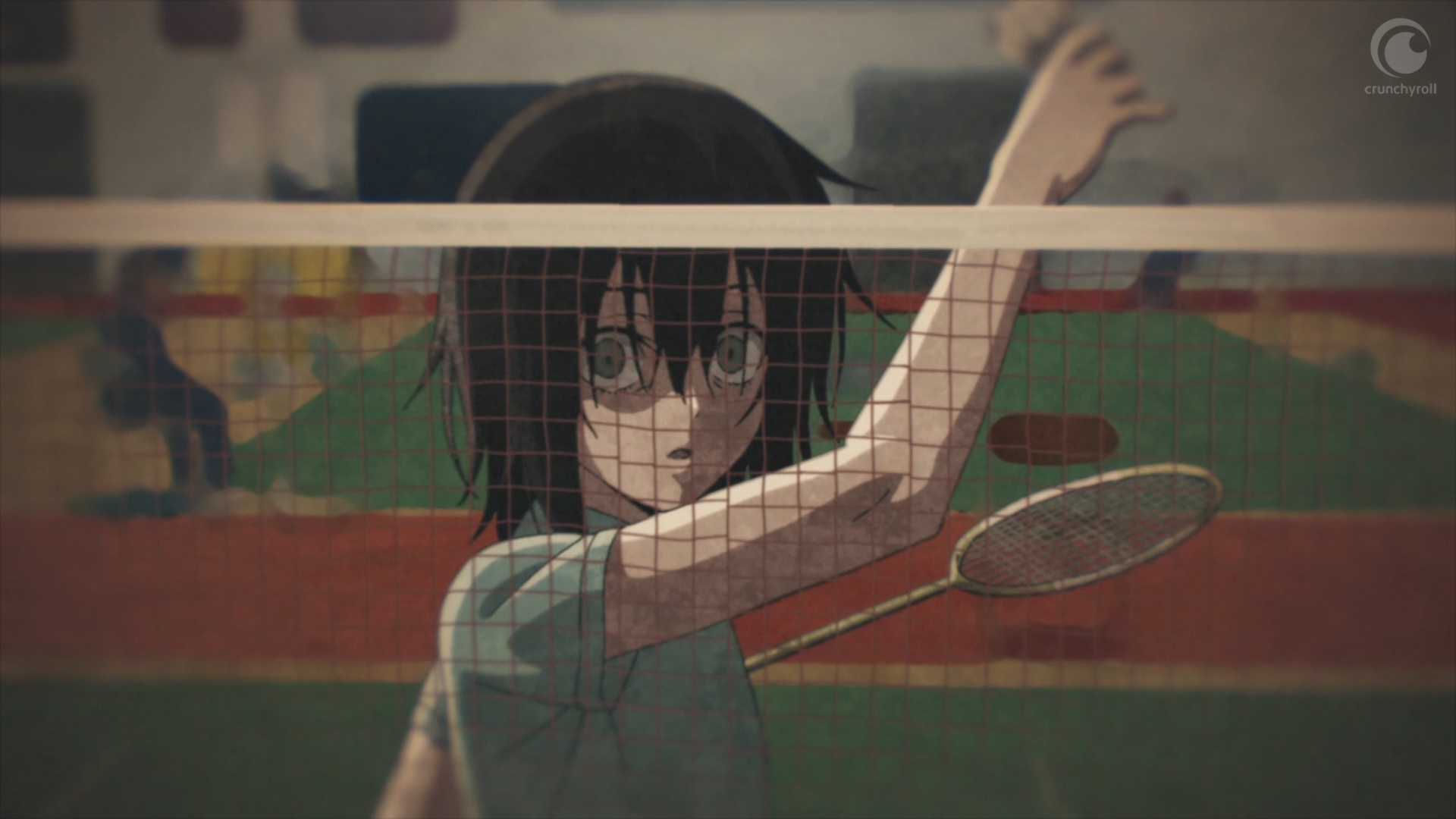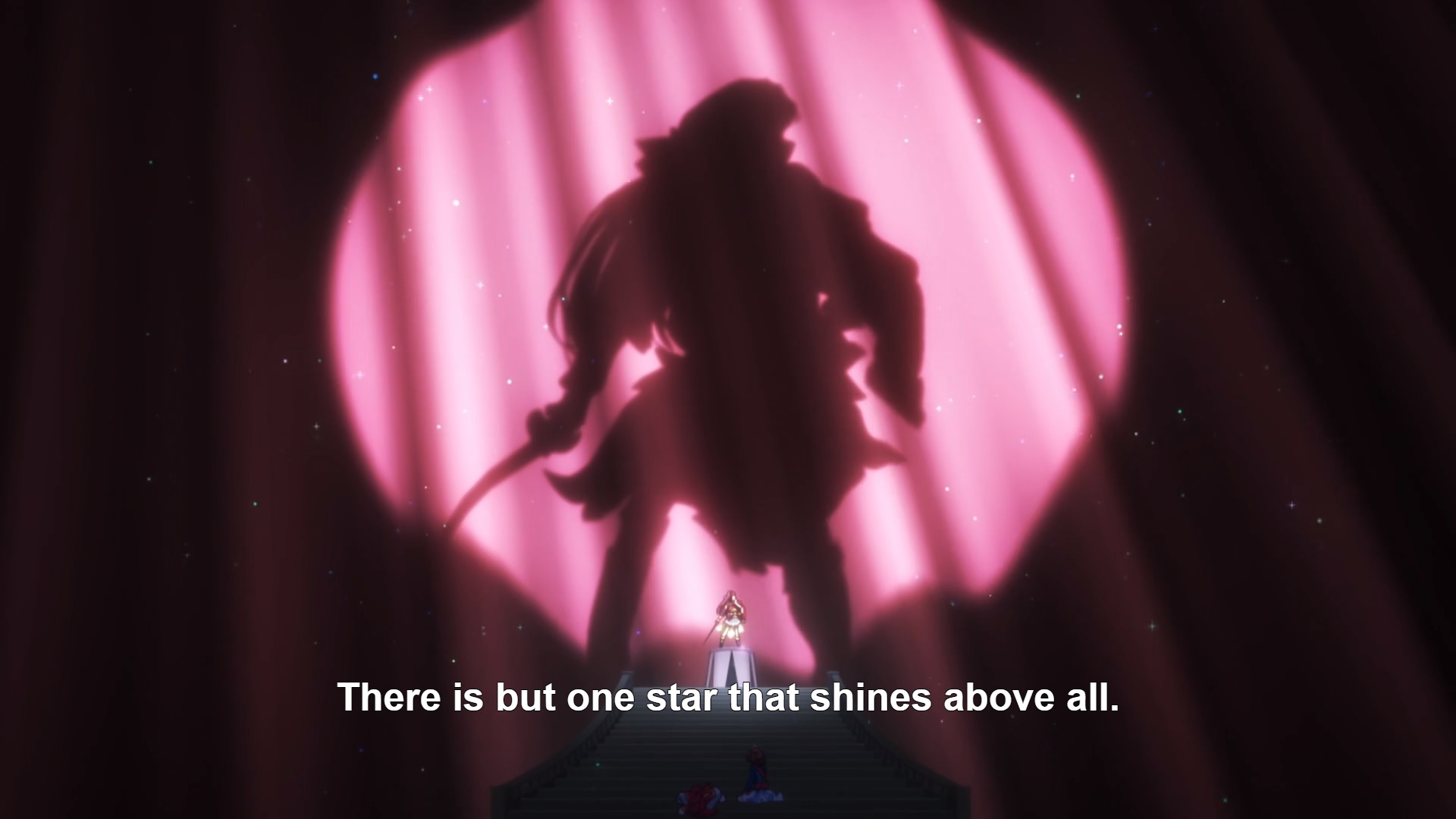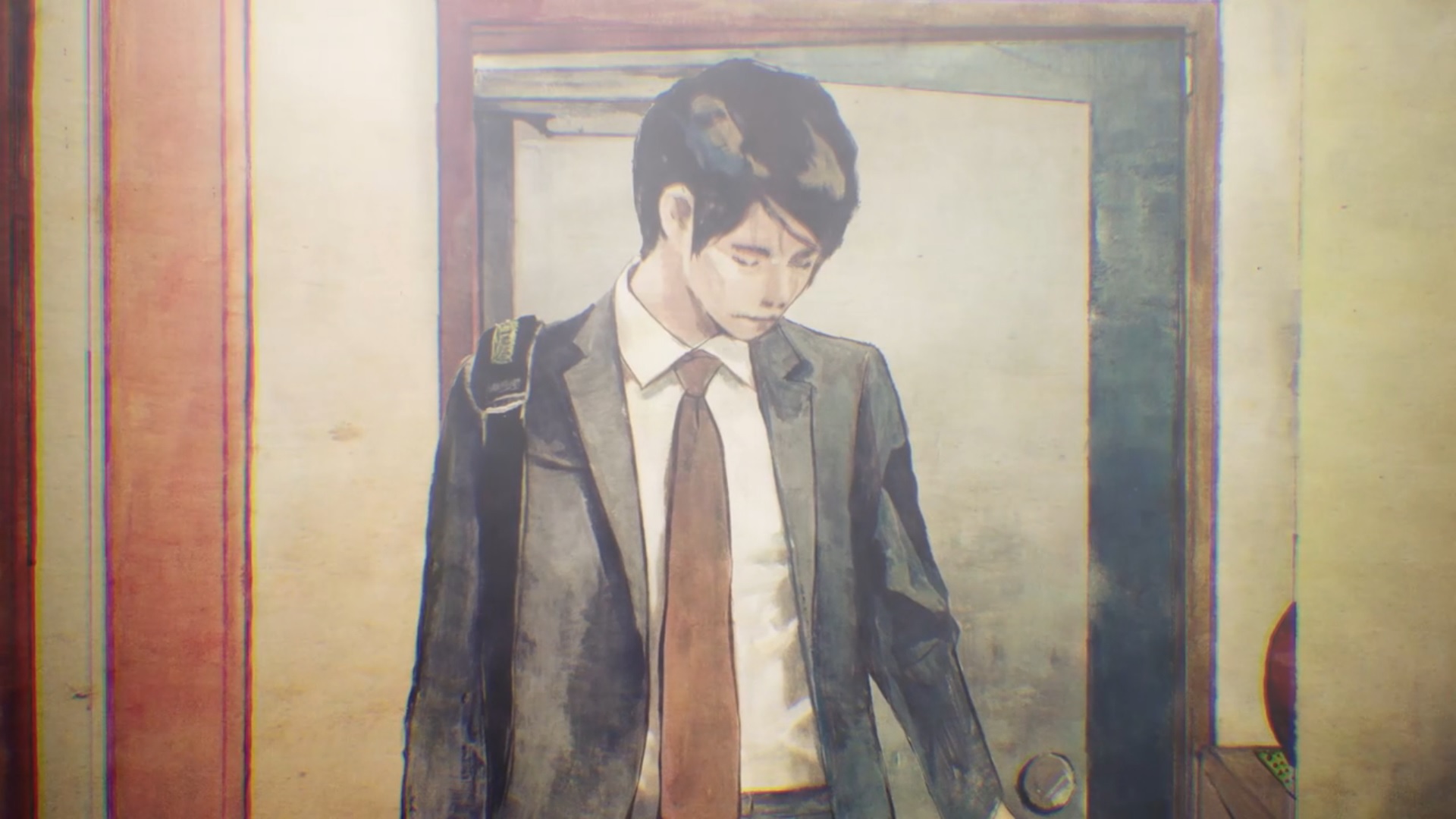Three-Episode Test: Ink’s Summer 2018
The horror.... The HORROR....
Welcome (back) to the Three Episode Test, where contributors give you the low-down on what they’re watching from the current simulcast season and why.

Angels of Death
Streaming on Crunchyroll
Summer is the season for horror in Japan, which gives those of us in the U.S.A. three more months of Halloween! I knew nothing of Angels of Death going in but found the first three minutes way more atmospheric than the entirety of Calamity of a Zombie Girl (see below). The premise – an amnesiac girl/ghost/ghost-girl (Who knows? Not me.) awakens in a tiered maze with themed shinigami floor captains hell-bent on her demise – shows great campy promise in the vein of Deadman Wonderland and Future Diary, and I actually find the heavy-handed “angel vs. sacrifice” bent just adolescent enough to make this a perfect popcorn watch.
Episode 2 conveniently but adeptly switches theme and ambience via the show’s primary advancing device, an elevator connecting floors of the building, but sacrifices atmosphere for adolescent tripe; the threat the floor master poses, especially given the age of his intended victim, is repugnant at the very least and cringe-worthy at best as a choice of insinuation and choice of execution. And while the tag-a-long affords the grand idea of compounding terror, the character himself is nigh unbearable and pretty much ruins my enjoyment of the series.
Episode 3 redeems the adolescence of the series by owning it, and the ambience here is in full bloom. I look forward to a rollercoaster ride of being impressed and let down, but I think Angels of Death offers enough to stick with for a season.

Angolmois: Record of Mongol Invasion
Streaming on Crunchyroll
Regardless of whether or not this series is a stepping stone for audiences towards consuming and loving Gifu Dodo, Angolmois is a wonderfully executed historical drama. It’s an underdog tale of exiles leading a native army against a truly intimidating foe, and it couldn’t be more deliciously told. (Well, maybe if they removed the “vintage filter.”)
Noses! Noses, protruding and bulbous, are back in anime! The character designs are strong but not particularly exaggerated, which makes the battlefield sympathetic. And there are no magical warriors here – just victims of adjudication set against circumstance. And the resulting dance, the setting up amidst expedited anarchy, is too soap opera not to commit to however many episodes lie in store.
I know nothing of this period in Japan’s history, but I’m excited to watch a fictionalization of its account. I’m excited to research the origins of this fiction, and this anime has enabled my thirst. The only thing working against this series is that it employs a visual filter – perhaps meant to emulate historical scrolls – that mostly seems to detract from the outstandingly rendered character designs and backgrounds but which also, in unexpected moments of beauty, actually interacts with the lighting and other elements for a stunning reprieve.
I’m hooked, and my lip’s not giving way.

Asobi Asobase – Workshop of Fun
Streaming on Crunchyroll
In comedy, simple is usually good, and the premise behind this school-club-that’s-not-a-club anime is simple enough. Add in character descriptions full of promise (in combination), some legit good timing, and ace reaction faces, and you get twenty-some minutes of high school girls screaming in your ears.
Hard pass.
There are other reasons why I’ll be skipping this title: there’s not a single likable character (on purpose), and the promising aspects of each are worn thin way too early (I mean, if you wanna get mean, get MEAN); the pacing and tonal shifts are erratic (which actually lend to the aforementioned timing); and I generally don’t think I’m in the mood for a comedy. Maybe it’s 2018, maybe it’s that 2018 followed 2017, maybe it’s the fact that the whole “cheating at pastimes” scenario was done too perfectly in When They Cry and doesn’t deserve twenty-something minutes a week. Maybe Teekyu already exists. Yeah, I’ll settle on that last one. Asobi Asobase will undoubtedly find its fans among the cocaine and Adderall addicts of AniTwitter (no judgement), but turning up the volume doesn’t make music any better than it does jokes funnier. In closing: get off my lawn.

Calamity of a Zombie Girl
Streaming on Crunchyroll
Trying to find the good in this feature-length ONA about a zombie and her be(a)stie awakening in a tale of Scooby Doo gone horribly, horribly awry is like plunging one hand inside the rotted remains of a corpse to grope around for treasure. Sure, you might come across something after a while, but it’s most likely just a vertebrae.
Here’s the thing: the show is not quite the calamity it claims, but it tries really hard to be. Certain atmospheric elements work well but are used so infrequently that they come off, at best, as cheesy or, at worst, as a laughably rigid contrast to the rest of the scenes. Graphic, utterly unflinching, on-screen violence brings the thrill here, and make no mistake, there’s a lot of it. Unfortunately, not all of it is “tasteful.” Women bear the brunt force of the majority of the trauma while the men get quick and easy deaths (certainly not deserving of the assholes they are). That brings up another point: none of these characters are particularly likable; the titular zombie girl is (purposefully) the most empathetic character of the bunch, while everyone else is a one-note gimmick or such an ass that you just can’t wait for violence to arrive. You could do worse things than sit down for an hour and twenty minutes with this, but why challenge yourself?

Cells at Work
Streaming on Crunchyroll
Given the average lifespan of a red blood cell is 120 days, expect the main character in Cells at Work to die roughly one month after the current season stops airing while everyone is watching something new.
I’m no expert in biology (shocked?), so learning what I’ve inevitably forgotten from Biology 101 via animated, bloody (in every way imaginable) battle scenes is as comedic as it is tragic in a real-world sense. Evoking a more “urban” Moyashimon, Cells at Work dedicates the first episode to enrapturing audience with the trials and tribulations of an appropriately red-headed red blood cell and her white knight blood cell savior. Episode 2, which will make you never want to pick scabs again, focuses again on the savior complex and introduces chibi-fied platelets. Episode 3 delves into the body’s response to influenza and involves all cast to date and then some.
[I really can’t wait until the “long night drinking” episode, where the anthropomorphized neurons (obviously depicted wearing glasses … hopefully Sakamoto style) die en masse as if by genocide.]
There’s nothing to hate here. It’s just silly fun anthropomorphizing cells in their human habitat. You might learn something or remember something you learned by watching, but mostly you’re gonna think, “Damn, the body’s daily struggle sure is bloody.” Since there’s nothing annoying, I’ll stick with this until season’s end.

HANEBADO!
Streaming on Crunchyroll
I was all set for hyper sexualized badminton from Episode 1: the way the sweat wicks off the girls’ thighs, the obvious gainax homages, and possible battle damage (as promised in the OP). What I got was a very decently (beautiful, even) animated sports show with a lot of existentialism; some 3 minutes in, HANEBADO! seems to be about anime characters questioning why their creator-gods brought them into existence. If only ironically (and inevitably for the Taiiku Podcast), these are the reasons I’ll be watching until the very end of the season and however many cours the series has in mind.
The show balances the personal dramas that are introduced into and that develop within both club and competition. This reminds me of Scorching Ping Pong Girls (and, oh yeah, there’s sweat) in that the character dramas are far more interesting than those of the club/competition aspects, and the former are resolved all too quickly in favor of getting to the latter. The animation, as previously mentioned, is wonderful … so wonderful it deserves another anime. Or maybe this anime just needs Yuasa’s Ping Pong treatment.
As is, certain exaggerated limb stretches on the court really bring home a competent and even artistic depiction of movement. And unlike so many sports anime with nets, HANEBADO! actually took the time to make sure faces on the opposite side of a net look like they’re on the opposite side of the net. In short: this is one to watch for the action, but I so want the drama to prove me wrong.

Harukana Receive
Streaming on Crunchyroll
Are you ready for TWOCAR: beach volleyball edition (minus the outrageously themed duos, soap opera installments, and mechanical conveyances)? As opposed to HANEBADO!, which has the caps lock AND the exclamation point, Harukana Receive actually balances personal and competition-based drama solely on the court. By comparison, the animation isn’t nearly as impressive, but the lack of objectification, given that it is a seinen property and focuses on young girls in swimsuits endlessly undulating, is rather impressive…until you realize you’re fooling yourself.
For what it’s worth, I love to play volleyball. And I may be biased, butt this anime is a far better drama regarding paired politics than the aforementioned badminton anime. The animation isn’t cheap, but it’s not exactly enthusiasstic either. The curiosity remains: how can an anime linger so on the curves copped by a swimsuit and yet fail to serve the fapping needs of the anime community for which it’s drawn? The answer is the number of cuts and animation direction. Both really help this series be more than expected (but somehow less than enthralling … I’m writing this review in the middle of Episode 3).There’s little keeping me here other than the fact that I’ll probably be podcasting about it for Taiiku Podcast sometime after the season is over, but it’s a decent enough fiction about a sport I legitimately enjoy. Sometimes, that’s enough.

Mr. Tonegawa Middle Management Blues
Streaming on Crunchyroll
I think what sold me on this was the sheer drama deliciously extracted from the painful banality of the focus: a middle management henchman – a No. 2 under the screws of a maniacal CEO and in charge of the most feared goons in the prefecture (or all of Japan). The initial installment of the series includes an extended, exaggerated segment on the terror of learning the underlings’ names as to make them feel welcome enough to be useful. It had my gut busting and planted, right then and there, the seeds of loyalty to the series.
While this spinoff does emulate the same aesthetic of Akagi’s and Kaiji’s original creator, Fukumoto, it was not drawn or written by the same. If you don’t understand why this may draw the ire of many, go watch Kaiji (which is referenced in the Tonegawa intro/OP and contextualizes the series chronologically) and ask the licensing gods why Kaiji has yet to get that sweet, sweet home distribution deal. But this is not about comparison; Mr. Tonegawa Middle Management Blues is its own monster, and it does a phenomenal job of being itself to the fullest.
This show is a comedy for the older set, and at 40 years old, I certainly know why I can’t pass up any episode. It’s the same reason I was glued to Gurazeni: Money Pitch: everything’s just kind of mellow-perfect, and I really hope online interest in this spinoff leads to a home distribution deal for Kaiji and Akagi.

Review Starlight
Streaming on HIDIVE
The first rule about drama club is: You do not talk about Giraffe! Giraffe? Since the start of this season, it feels like it’s been a long time since a series made my jaw drop in the midst of its own animated what-the-fuckery. Review Starlight is that show. What starts out as a club-based (theater this time) dramedy skews toward Ikuhara territory by the end of the very first episode. This is not surprising, and maybe even a little disappointing (in its mimicry), seeing as the director, Tomohiro Furukawa, did work under said auteur on both Mawaru Penguindrum and Yurikuma Arashi.)
Scenes are impressively active; the anime revolves around a theater class split into on-stage and backstage roles, and even the assembly or convening of members, say arriving at class or settling down at lunch, is a feast for the eyes: everything is in motion in every corner of the screen! Praise is due Kinema Citrus (Made in Abyss) for 2D and general animation production and T2 Studio for its 3DCG!
Outside of storyboarding and visuals, character designs are rather plain, but I think that’s on purpose as contrast to their stage/star selves. This series raised the bar on expectations this season with its first episode. I’m staying with it to see if it runs out of surprises or if it can pull an infinite handkerchief.

To Be Heroine (Sequel)
Streaming on Crunchyroll
To be honest, this was a title from last season that started late and finished early, so it did not have a chance to make any of our Spring 2018 3ETs. This sequel to To Be Hero is another Chinese co-production with Studio LAN, and the first three episodes are the kind of train wreck artists want to immortalize. That is to say there’s something very much worth your attention underneath the concept of a teenage girl and babies disrobing to enable empowered, anthropomorphized undergarments that fight battles in an alternate reality.
There are only seven episodes to this series, and the first three just dare you to turn away for their thirst towards the main character. But there’s something aside from the obvious parallel world metaphor that made me keep watching, and I’m insanely glad I did. Subversion would be putting the device lightly. This anime is chaos, and even the ending, with all its want for everything, comes across as something completely acceptable (partly because you’ve already given up and will accept just about anything after having been blown away by such sharp turns).
The art may not be anything grand, but there are moments when the animation shines (and it’s not always the fight sequences). I don’t think there’s anything here that matches the beauty of the one-man-drawn OP for To Be Hero, but there are more than a few sequences that will make you “Oooooohhhhh.” It’s seven episodes and deserves your attention for all the work the show runners have put in to try to turn you away.

Yamishibai (Sequel)
Streaming on Crunchyroll
From Episode 1, the most current season of Yamishibai believably relays more atmosphere within three minutes than Angels of Death renders in three episodes. Even though the series has been on a yay-or-nay scale since Season 2 for most (and Season 3 for me), Yamishibai, for its huge time investment, is still well worth the watch. The series seriously has a lot to offer, it’s just lost its way. And Season 6, unfortunately, is no different.
Episode 1 is very solid. It left me with a good deal of hope given Season 5’s return to form. Episode 2 lingers longer than it should, but is still a masterful piece of work before it wears out its welcome. Episode 3 – capturing neither the sense of horror nor regret the series has relied upon thus far – is a bit of an odd duck. Increasingly disappointing episodes are not the best way to begin a Three-Episode Test, but it may be the perfect critical reason to say goodbye to a series that has brought me so much joy through various forms of fright.
I’ll be finishing out the season (I mean … it’s a short), but without something special this season, in terms of execution or theme, I’m pretty sure I’m closing the door on Yamishibai.
